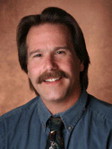
After visiting Dr Lieber’s center this past summer, I came away thinking that this is the way rehabilitation research should be done. Physiatrists understand that the clinical problems confronting us in rehabilitation medicine are complex, involving virtually every aspect of the neuromuscular system. Our disabled neuromuscular patients encounter problems that will require the brightest and the best researchers pushing themselves to the limit to solve. Yet, no one single person or persons will be able to conquer disorders like muscular dystrophy or peripheral neuropathy working by themselves. Even when ideas are exchanged openly at meetings there are still missed opportunities. Why not have the brightest and the best muscle histologists working directly with the brightest and the best clinicians from all over America? With everyone working at the top of their game on specific aspects of a complex, multifaceted problem, there suddenly becomes a fighting chance that we can come up with truly effective treatment paradigms.
After the site visit, I was treated to a wonderful lunch near the beach in La Jolla, a place known for stimulating good ideas. As I sat there and listened to brilliant minds discussing their research in an open, collaborative fashion, the idea for this volume of Physical Medicine and Rehabilitation Clinics of North America was born. Now the important thing to understand here is that these centers exist for all of us, including clinicians who are not necessarily affiliated with a major academic center. Physiatrists should be comfortable with multidisciplinary, cross-collaboration and open sharing of information, as well a willingness to confront complex problems. The mission statement of rehabilitation professionals should also include both an academic and a clinical perspective. I am very excited about the opportunity to help introduce physiatrists and other rehabilitation clinicians to these research concepts.
My primary goal with this volume of Physical Medicine and Rehabilitation Clinics of North America is to provide you with an overview of the University of California, San Diego center followed by a series of cutting-edge articles that were born of this cross-collaborative methodology and offer the latest information on a myriad of clinical problems encountered in neuromuscular medicine. A secondary goal is to stimulate you to consider tapping in to this rich source of readily available help that will enhance your capability of doing medical rehabilitation research and clinical investigation. The third and ultimate goal is, of course, to improve the quality of life for people with neuromuscular disabilities but that cycles back in to my first two goals.
Finally, I want to personally thank all of the contributing authors for all their time and hard work invested here to provide you with an amazing wealth of cutting-edge information that can be directly applied to your clinical practice.









